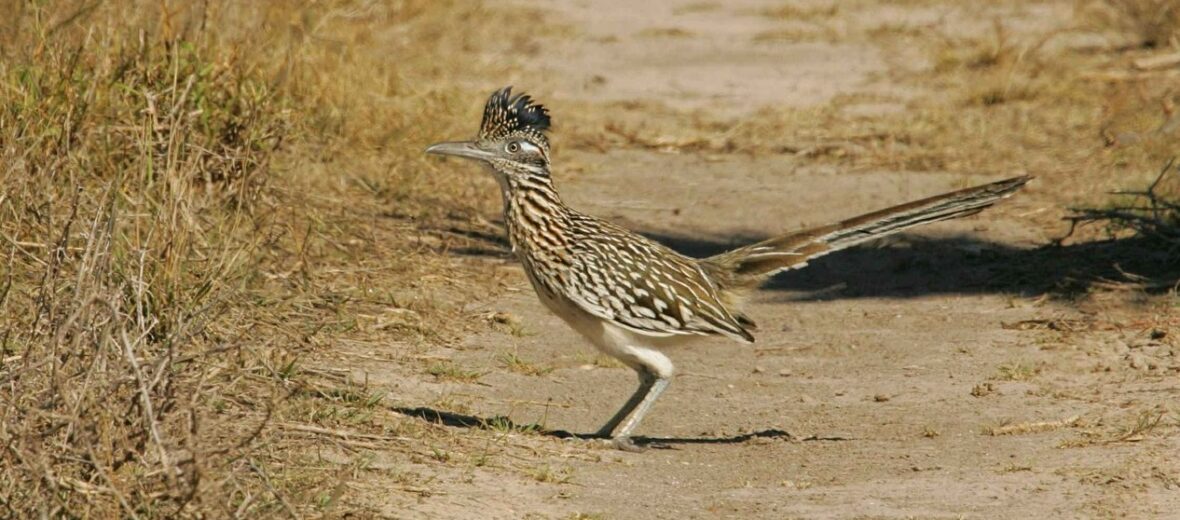
Believe it or not, the roadrunner belongs to the cuckoo family. These birds can be found in California to the southwestern corner of Missouri, and down to northern Mexico. They like to hang out in deserts, arid areas, grasslands, scrublands, woodlands, and urban areas. Hunting, habitat loss, and vehicles are the biggest threats to their overall numbers; but their numbers are stable. Contrary to the popular cartoon series, roadrunners cannot outrun a coyote. They are also known as chaparral birds, snake killers, and ground cuckoos.
First the Stats…
Scientific name: Geococcyx
Weight: Up to 20 ounces
Length: Up to 24 inches
Wingspan: Up to 24 inches
Lifespan: Up to 8 years
Now on to the Facts!
1.) These birds have zygodactyly (2 toes pointing forward and 2 pointing backward) feet that leave a characteristic X shape in the dirt.
2.) They have a special pair of glands near the eyes that eliminate excess salt from their body.
3.) Roadrunners are diurnal (active during the day) that will seek shelter in shrubs and under trees if it gets too hot out.
4.) Their main prey are mice, insects, spiders, birds, eggs, lizards, and snakes. They also eat fruit and seeds. This makes them omnivores. They will even venture as far as to eat rattlesnakes!
5.) The roadrunner has a few predators, sans cars. These predators include coyotes, raccoons, hawks, skunks, and domestic cats and dogs.
But wait, there’s more on the roadrunner!
6.) The primary means of transportation is, of course, running. However they can fly short distances.
7.) Roadrunners don’t migrate. This is because they are only able to fly short distances.
Did you know…?
These birds are so well adapted to their typically waterless environment that they don’t need to drink standing water. They get all the water they need from their food!
8.) A roadrunner can make about 7 different calls.
9.) There are 2 known species of this cuckoo bird, the greater (Geococcyx californianus) and the lesser (Geococcyx velox) roadrunner.
10.) This bird is very territorial and will gladly defend its territory of a half mile in diameter.
But wait, there’s still more on the roadrunner!
11.) Roadrunners are monogamous (mate for life) and during the initial mating ritual, the male will try to woo the female with glamorous gifts. Gifts like dead animals.
12.) The female lays 3 – 6 eggs that hatch after about 20 days of incubation.
Now a Short Roadrunner Video!
Also, check out the Critter Science YouTube channel. Videos added frequently!
Want to suggest a critter for me to write about? Let me know here.



